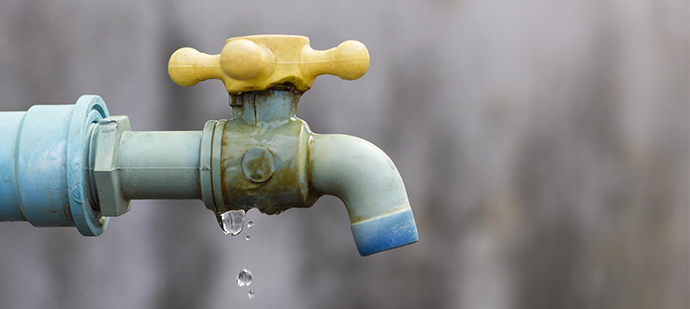Guide To Water Leakage Discovery In Your Home
Guide To Water Leakage Discovery In Your Home
Blog Article
What are your beliefs about Locating water leaks?

Early detection of leaking water lines can alleviate a possible disaster. In addition to conserving you cash, it will certainly decrease the stress and stress. The moment you locate a leak, calling your plumber for repairs is the very best remedy. Some little water leaks may not be visible. If you can not find it with your naked eyes, here are some hacks that assist.
1. Examine the Water Meter
Every home has a water meter. Inspecting it is a surefire manner in which helps you discover leaks. For beginners, turn off all the water sources. Make sure nobody will purge, make use of the faucet, shower, run the cleaning machine or dishwashing machine. From there, most likely to the meter and watch if it will alter. Since no one is utilizing it, there need to be no movements. That shows a fast-moving leak if it relocates. If you identify no changes, wait an hour or two as well as inspect back once again. This suggests you might have a slow leak that could even be underground.
2. Check Water Usage
If you detect unexpected adjustments, despite your intake being the very same, it suggests that you have leakages in your plumbing system. An unexpected spike in your expense suggests a fast-moving leak.
Meanwhile, a steady increase every month, despite having the very same routines, reveals you have a slow-moving leakage that's likewise slowly rising. Call a plumber to extensively inspect your building, specifically if you feel a cozy area on your flooring with piping beneath.
3. Do a Food Coloring Test
When it involves water usage, 30% comes from commodes. Test to see if they are running effectively. Decrease flecks of food color in the container as well as wait 10 mins. If the shade in some way infiltrates your bowl throughout that time without flushing, there's a leak in between the storage tank and also dish.
4. Asses Exterior Lines
Don't neglect to inspect your outside water lines as well. Examination spigots by connecting a yard tube. Needs to water seep out of the connection, you have a loosened rubber gasket. Change this and ensure all links are limited. It will certainly assist obtain it professionally checked out and also maintained yearly if you've got a lawn sprinkler system. One tiny leak can lose lots of water and also increase your water bill.
5. Inspect and Assess the Situation
Property owners should make it a behavior to check under the sink counters and even inside cupboards for any type of bad odor or mold and mildew development. These two warnings show a leakage so prompt focus is needed. Doing routine evaluations, even bi-annually, can conserve you from a significant trouble.
Examine for discolorations and weakening as many pipelines and appliances have a life expectancy. If you suspect leaking water lines in your plumbing system, do not wait for it to rise.
Early discovery of dripping water lines can mitigate a possible calamity. Some small water leaks might not be visible. Examining it is a guaranteed way that aids you discover leakages. One small leakage can squander loads of water and also spike your water expense.
If you suspect leaking water lines in your plumbing system, don't wait for it to intensify.
How to Know If Your Home Has a Hidden Leak
Water Meter Reveals Inexplicable Water Usage
If you’d like to test whether or not there’s a leak somewhere in your home, you can do this using your water meter. Here is how to conduct the test:
Don’t use any water in your home for at least 30 minutes; this also means not turning on faucets or water-using appliances.
Go outside, and check your water meter for activity.
If your water meter shows that there was activity, even though no one was using any water, this proves that there is a leak in your home.Visible Mold or Mildew Growth
Leaks behind walls create moist, dark environments that allow mold and mildew to grow and thrive. Eventually, you might see mold growth forming on the wall closest to a hidden leak.
If mold is growing in an area that receives a high amount of moisture, such as a bathroom, it may simply be an indication that better ventilation is needed. However, if you see mold growth on a wall or the ceiling in an area where you would not expect, you probably have a hidden leak.
Musty, Mildew Odor
Sometimes you might not be able to see the mold or mildew that is growing as a result of a leak. However, the smell can give the problem away just as easily. If you catch a whiff of something musty, there’s a good chance that old water is collecting somewhere in your home that you can’t see.
Stained/Warped Walls, Ceilings, or Floors
When your home soaks up water, a variety of red flags can become visible, including ceiling stains, bubbling drywall, warped walls, and sagging floors. While these issues can be caused by excess humidity, they can also be signs that a pipe or plumbing connection has started leaking behind your walls.
Inexplicably High Water Bill
After a while, you get a general sense for what your water bill should be. If you own a pool or sprinkler system, your bill will tend to be higher during summer. However, if you receive a water bill that seems especially high, and you can’t figure out what caused it, then you may have a hidden leak somewhere that’s increasing your bill.
https://www.plumbingjoint.com/blog/2019/july/how-to-know-if-your-home-has-a-hidden-leak/

We had been made aware of that article on Detecting hidden plumbing leaks through a friend on our other domain. Enjoyed reading our entry? Please share it. Help others locate it. Bless you for your time. Kindly visit our website back soon.
Report this page